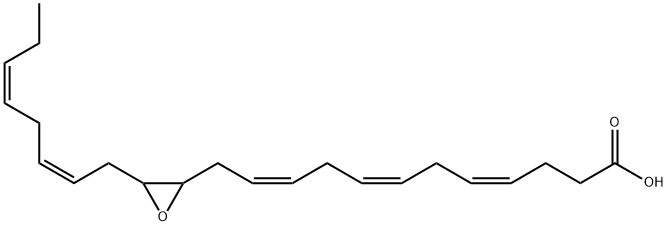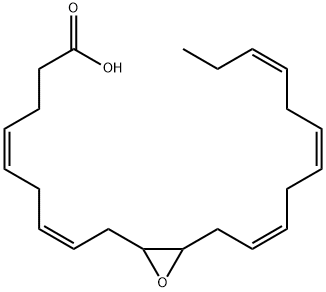Description
Cytochrome P450 metabolism of polyunsaturated fatty acids produces numerous bioactive epoxide regioisomers. (±)13(14)-EpDPA is a docosahexaenoic acid (DHA; ) epoxygenase metabolite, derived
via epoxidation of the 13,14-double bond of DHA. It has been detected in rat brain and spinal cord and is a preferred substrate for soluble epoxide hydrolase with a K
m value of 3.2 μM. (±)13(14)-EpDPA demonstrates antihyperalgesic activity in inflammatory and neuropathic pain models.
1 (±)13(14)-EpDPA and other epoxy metabolites of DHA are also reported to potently inhibit angiogenesis and tumor growth in
in vitro assays.
2
References
1. Morisseau, C., Inceoglu, B., Schmelzer, K., et al.
Naturally occurring monoepoxides of eicosapentaenoic acid and docosahexaenoic acid are bioactive antihyperalgesic lipids J. Lipid Res. 51,3481-3490(2010).
2. Zhang, G., Panigrahy, D., Mahakian, L.M., et al.
Epoxy metabolites of docosahexaenoic acid (DHA) inhibit angiogenesis, tumor growth, and metastasis Proc. Natl. Acad. Sci. USA 110(16),6530-6535(2013).





